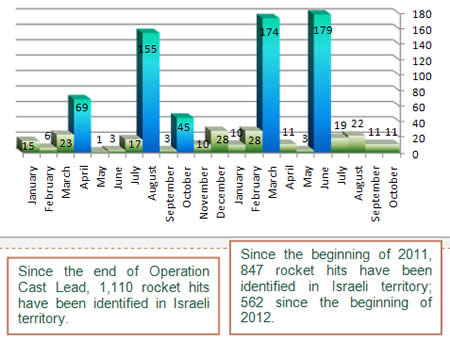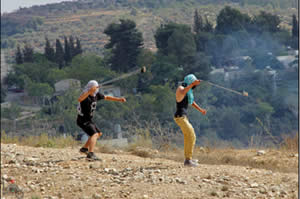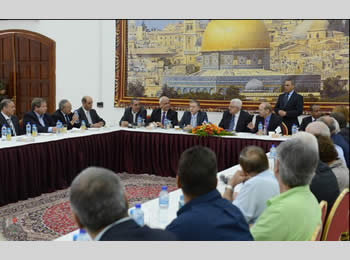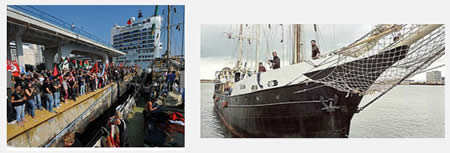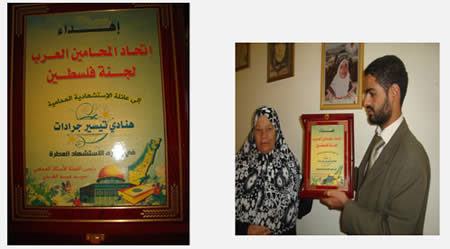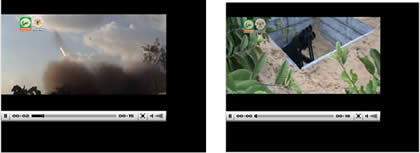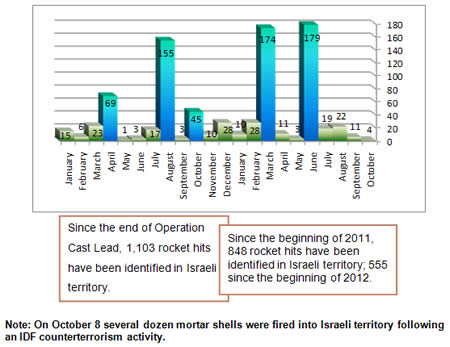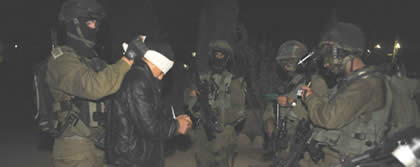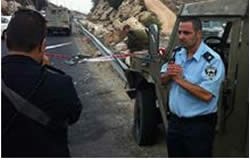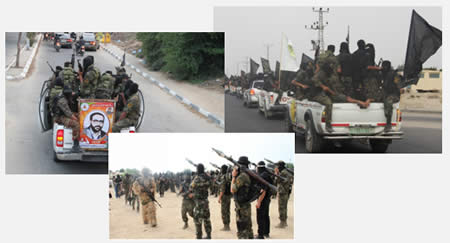
While on a visit to North Khorasan Province, Supreme Leader recognizes effects of sanctions, continues to demonstrate resolve

Majles starts proceedings to summon Ahmadinejad to hearing for second time in a year

The new E.U. sanctions against Iran (Fars, October 15)

Import of luxury cars into Iran on the rise despite economic crisis

''Sexual revolution'' in Islamic republic

Supreme Leader’s visit to North Khorasan Province

Supreme Leader’s visit to North Khorasan Province

Supreme Leader’s visit to North Khorasan Province

Supreme Leader’s visit to North Khorasan Province

Supreme Leader’s visit to North Khorasan Province

Supreme Leader’s visit to North Khorasan Province
-
While on a visit to North Khorasan Province, Supreme Leader recognizes effects of sanctions, continues to demonstrate resolve
-
Majles starts proceedings to summon Ahmadinejad to hearing for second time in a year
-
Commentary article: what are the reasons for the sanctions against Iran and how should they be presented to the public?
-
Import of luxury cars into Iran on the rise despite economic crisis
-
“Sexual revolution” in Islamic republic
While on a visit to North Khorasan Province, Supreme Leader recognizes effects of sanctions, continues to demonstrate resolve
In recent days Supreme Leader Ayatollah Khamenei has reiterated his well-known views about issues on the Iranian agenda while on a seven-day visit to North Khorasan Province in the country’s northeast. The Supreme Leader demonstrated resolve, expressed his confidence in Iran’s ability to overcome the problems it is facing, and restated his position that the sanctions imposed on Iran have nothing to do with its nuclear program.
During his main speech, given on Wednesday, October 10 in the city of Bojnord, Khamenei said that the main objective is for the Iranian nation to achieve progress. He stressed, however, that the meaning of the term in Islam is different than the meaning it has in the West. While progress in Western thought applies only to material things, such as progress in wealth, science, army, and technology, the Islamic concept of progress includes also spiritual notions: scientific progress, justice, public welfare, economic development, international status, and political independence. Khamenei said that while the road to progress, which is a final objective of the Islamic revolution, may be fraught with problems and obstacles, they can be solved through determination, hope, hard work, planning, and readiness. No problem is real and no danger is certain unless the people lose their hope, patience, and determination, grow lazy, and become confused and aimless. The Supreme Leader discussed the significance of Iran’s younger generation to achieving progress, and admitted to having been part of the wrong birth planning policy which, as he said, should have been changed already in the 1990s.
Khamenei went on to discuss the economic situation in Iran. He said that the price increases and unemployment are the main problems facing the Iranian people. According to Khamenei, these problems can be solved because for 33 years the Islamic revolution has faced even more serious issues, such as attempts to provoke ethnic conflicts after the revolution and the Iran-Iraq War. The Iranian people overcame these problems thanks to their firm stand and intelligence. Khamenei said that, according to a survey held among North Khorasan residents prior to his visit, they, too, list the price increases and unemployment as the main problems.
Speaking about the economic sanctions imposed on Iran, Khamenei said that it is incorrect to draw a connection between the economic problems and the sanctions. He admitted that, while the sanctions create problems for Iran that may escalate as a result of mismanagement, these are not problems that Iran is unable to solve. He argued that the sanctions are nothing new, and that they had started immediately after the victory of the Islamic revolution. Iran’s enemies in the West are trying to maximize their impact and there are some in Iran who unfortunately repeat the claims made by the West about the issue. Khamenei noted that the Western argument of the sanctions having to do with the nuclear program is false, since they had started even before Iran began considering the possibiltiy of using nuclear energy. Those who say that the sanctions will be lifted if Iran gives up its right to nuclear energy are lying. What angers the West is the Iranian people’s dignity, spirit of independence, and unwillingness to surrender. The Western countries are using the irrational and “barbaric” sanctions to wage a war against the Iranian people, but it is a war in which they will be defeated.
Khamenei dismissed the recent demonstrations in the Tehran bazaar, arguing that, while several people were burning dumpsters on the streets for two or three hours, the Western countries were celebrating. He noted that, just as in the 2009 riots there were some who took advantage of the protests to instigate violent riots, this time, once again, there were some who instigated riots in the name of the bazaar merchants, who were wise to denounce the acts of violence. Khamenei said that the economic situation in Iran is better than that in European countries, which for the past year have been faced with incessant protests by people on the streets.
In implicit criticism of the president, the Supreme Leader called on top regime officials to cooperate with the other branches of government, work within the confines of the law, and refrain from putting blame on others. All branches need to work in accordance with their responsibility, which is well defined in the constitution, and cooperate with each other. In another speech, given by Khamenei on Monday, October 15 in the city of Shirvan, the Supreme Leader called on top officials to maintain a relaxed political atmosphere ahead of the presidential elections. He said that the enemies of Iran would like to destabilize the country’s security, and that all authorities must work for the preservation of political stability.
Speaking about developments on the regional and international scene, Khamenei said that the events in the region are a threat for the “Zionist regime” and could cause damage to the West, particularly the United States. He criticized European countries for following the lead of the United States, warning them that this only makes the Iranian people hate them more (Fars, October 10).
During a meeting held with clerics in the region, the Supreme Leader stressed the significance of the clerics and the importance of their relationship with the regime. He argued that the enemies of Iran are trying to separate the clerics from the regime, but that the clerics are “soldiers of the regime” and cannot cut themselves off from it. He said that, in light of the attempts made by Iran’s enemies to break the determination of the Iranian people, the clerics are entrusted with a special responsibility, the way they were during the “faction war” (a term used to refer to the Battle of the Trench, or the Battle of Khandaq, fought in 627 between on one hand Prophet Muhammad and his supporters and on the other the Quraysh tribe, who laid a siege to the city of Medina and assaulted the Prophet). Early in the history of Islam, some people of little faith called on the believers to turn from their path, but the Prophet’s supporters replied that they were unafraid of the pressure exerted on them and that they would continue on their path. The Iranian people, too, are now drawing upon all their resources and powers to resist the pressure exerted on them (Fars, October 11). Khamenei’s remarks were one more example of the continuing use made by top regime officials of religious arguments and Islamic narratives as part of their efforts to mobilize public support in the economic crisis. In recent months Khamenei has on several occasions compared the current situation in Iran to the situation faced by the Muslim community in the early days of Islam, saying that, at that time, the Muslims who supported the Prophet also faced many threats and challenges, which they were able to overcome thanks to their determination and faith.
In another speech, given to military units in the province, the Supreme Leader said that the high readiness of Iran’s armed forces is the main factor able to deter the enemies of Iran from launching a war against the country. He stressed that, while the Iranian nation is not aggressive, Iran will not back down in the face of any act of aggression (Fars, October 12).
The Supreme Leader’s visit to northern Iran has been at the center of media attention in recent days. Given the state-controlled media’s intensive coverage of the Supreme Leader’s visit and the welcome he received, regime opponents accused Khamenei of squandering public funds for propaganda and of fostering a personality cult. The reformist website Kalemeh compared the characteristics of Iran’s current regime to the rule of the first Shi’ite imam, Ali bin Abi Talib. One of the most important features of the political model adopted by Ali during his caliphate was the human, moral, and legal bond between the government and the citizens, the website said. Comparing the situation in Ali’s time to the current situation in Iran reveals the growing difference between the two periods. Khamenei’s trip to North Khorasan Province and the conduct of his supporters ahead of the visit are manifestations of a personality cult and indicate that there is a big difference between Iran’s current leaders and Imam Ali, who expressed his disapproval of the grand welcome he was given on his way to the Battle of Siffin (which he fought against Syria’s ruler Muawiyah bin Abi Sufyan in 657) and of the pomp and ceremony that were lavished on him as caliph.
A commentary article published by Kalemeh said that the media are widely covering the Supreme Leader’s visit to northern Iran while completely ignoring the foreign currency crisis, the economic crisis, the employment problems facing Iranians, inflation, the government’s powerlessness, and the mismanagement. The media does not even mention that North Khorasan is one of the poorest provinces in Iran, and that it has a particularly high unemployment rate (Kalemeh, October 10).
A number of Iranian anti-regime bloggers also criticized the Supreme Leader’s visit to North Khorasan. One blogger pointed out the discrepancy between Khamenei’s call to adopt an “economy of resistance” and the considerable expenses involved in the trip. At a time when the Supreme Leader is talking about an economy of resistance, the people of Iran need to bear the financial burden of his trip, and while those close to the Supreme Leader do not feel the consequences of the economy of resistance, the difference between them and the common people grows increasingly wider. While the people are worried about how difficult it is to obtain bread, the Supreme Leader’s allies are worried about how to turn Khamenei into an “imam”. The Supreme Leader’s propaganda-oriented trip is a reflection of the growing rift between the regime and the people. Khamenei’s rise from the religious rank of Hojjat-ol-Eslam to Ayatollah, then to Ayatollah Ozma, and now to Imam does nothing to change his reputation as tyrant among the people, and the heavy cost of his trip during a time of severe economic crisis is evidence to him being an anti-popular, absolute ruler (http://gostaresh-agaahi.blogspot.com, October 9).
Implicit criticism of the extravagant welcome given to Khamenei during his visit was also made by the conservative daily Jomhuri-ye Eslami. An editorial summarizing the events of the week said that the Supreme Leader himself had said during his latest visit to Kermanshah Province that displaying his pictures everywhere is an unjustified waste of money that does not serve the interests of the regime. It is important to remember his remarks, Jomhuri-ye Eslami said, particularly considering the economic crisis and the negative effect of such unnecessary expenditures in the current conditions (Jomhuri-ye Eslami, October 11).
The Supreme Leader’s admission of his mistake with regard to Iran’s birth planning policy also received considerable attention. In an editorial titled “The culture of admitting mistakes”, the daily Jomhuri-ye Eslami said that other top Iranian officials would do well to take to heart the Supreme Leader’s willingness to admit his mistake (Jomhuri-ye Eslami, October 13). The Digarban website reported that Khamenei’s admission sparked an animated debate among regime supporters on social networks about whether the Supreme Leader is infallible. A number of bloggers had praise for his willingness to admit his mistake, claiming that portraying him as being infallible is wrong. Those who say that the Supreme Leader is infallible do so in order to portray those who dare criticize them as enemies to the Supreme Leader and to religion, and justify their oppression. Other web surfers said, on the other hand, that the Supreme Leader’s remarks should not be construed as evidence that he is not infallible. One web surfer wrote that he still believes “Imam Khamenei” is infallible, because otherwise he would not be the guardian jurisprudent (Digarban, October 15).
Majles starts proceedings to summon Ahmadinejad to hearing for second time in a year
This week 102 Majles members submitted to the Majles presidency a motion to summon President Ahmadinejad to appear before the Majles members and answer their questions on the foreign currency crisis. According to Article 88 of the Iranian constitution, the Majles can summon the president to a hearing with the support of at least one quarter of its members. If the initiative to summon the president comes to fruition, it will be the second time in less than a year that President Ahmadinejad is asked to appear before the Majles members and answer their questions. The first initiative to summon the president was submitted to the Majles presidency in June 2011, but did not gain enough support after a number of Majles members withdrew their signatures from it. The initiative was resubmitted in December 2011, forcing the president to appear before the Majles plenary session in March 2012. After the motion to summon the president to a hearing was approved by the Majles presidency, it was forwarded to the Majles Planning and Budget Committee, where it will be discussed with the president’s representatives. In case the explanations they provide are found unconvincing by the Majles members, the president will have to appear for a hearing within one month. In principle, the hearing initiative could even result in the president’s impeachment.
Ali Iranpour, one of the Majles members behind the motion, said in an interview to Fars News Agency that the Majles members who have signed the initiative are determined to compel the president to appear before the Majles plenary session and answer their questions on the foreign currency market crisis and the price increases. He noted that the Majles members would like to have the president discuss inflation, the foreign currency crisis, the government’s economic performance, the Central Bank governor’s refusal to appear before the Majles, and the claims brought up by the president against the other branches of government and the security forces during the press conference he convened about two weeks ago (Fars, October 10).
Majles member Mohammad Damadi, another co-author of the initiative to summon the president to appear before the Majles, said in an interview to the reformist daily E’temad that the initiative reflects public concerns over the economic situation and is intended to help solve the problems faced by Iranians. Damadi said that it would have been better had the government conducted itself in a manner that would not require the Majles to summon the president. He criticized the government’s claims about the economic crisis being the result of the sanctions, saying that the Supreme Leader himself had declared that the Western sanctions were not to be blamed for the economic problems.
Damadi said that the president will only be required to discuss the crisis on the foreign currency exchange market and the fact that the Central Bank, which is his area of responsibility, refrains from injecting foreign currency into the market. At one point in the interview Damadi was asked whether it is possible that the motion to summon the president will eventually be taken off the agenda of the Majles, like the recently failed initiative by Majles members to impeach the minister of sports. He replied that there is a considerable difference between the two cases, because the Majles members are highly motivated to solve the economic problem. The Majles member discussed the possibility of the president once again avoiding a serious discussion of the questions asked by the Majles, as he did when he appeared before the Majles in March 2012. He expressed his hope that, this time, the president will provide clear answers and put public concerns at ease, adding that if the problems cannot be solved through unity, the Majles members will have to make a decision on how to proceed (E’temad, October 11).
While the initiative to summon the president is supported by some Majles members, others oppose it. A number of Majles members are arguing that the economic crisis calls for national unity, while others believe that the initiative is pointless since the term of the current government will end in a few months anyway. Abdolreza Azizi, a member of the Majles Social Committee, said that Majles members need to hold joint meetings with government representatives instead of summoning the president to a hearing. He noted that, considering the actions of Iran’s enemies, it is necessary for the branches of government to cooperate with each other. Majles member Zahra Tabibzadeh also said that the current conditions require the cooperation of all branches of government to deal with the economic sanctions and solve the economic problems, and that the initiative to summon the president will not solve the problems but only heighten the tensions plaguing Iranian society (Tehran Emrooz, October 10).
Majles member Ahmad Tavakoli, considered one of the president’s major opponents in the conservative camp, also had reservations about the initiative and referred to it as being ineffective. In an interview given to Mehr News Agency, Tavakoli suggested filing a complaint against the president to the judiciary instead of summoning him to a hearing for the second time. According to Tavakoli, the president has already proven that he does not act in accordance with national interests, and that he may take advantage of the hearing to make statements that will further destabilize the foreign currency market (Mehr, October 13).
Lotfollah Forouzandeh, the president’s deputy on parliament affairs, dismissed the initiative to summon the president to a hearing, saying that the general atmosphere in the Majles shows that the Majles members do not support it. He said that he had discussed the matter with several Majles members who told him they did not agree with the initiative (ISNA, October 10).
In addition to the hearing initiative, the president has come under increasing criticism from the conservative camp. Some have even spoken in favor of impeaching him before the presidential elections slated for June 2013. Avaz Heydar-pour, a member of the Majles National Security and Foreign Policy Committee, said this week that Iran is facing a crisis, and that even conservative Majles members believe that this situation cannot go on. Public opinion expects the Majles to take the necessary measures to improve the situation. While some Majles members believe that the government should be allowed to finish its term, others believe that the necessary measures should be taken to put an end to the current situation and shorten the term of the current government.
In an interview given by Heydar-pour to the Asr-e Iran website, he said that if Majles members reach the conclusion that the president is unable to answer the demands of the regime and the state, they need to remove him from office. Conservative Majles members can’t turn a blind eye to the severe situation in Iran. In 2005, Heydar-pour said, he, too, believed Ahmadinejad capable of becoming a worthy president and bringing Iran back to the values of the revolution. It turned out, however, that his values are completely contradictory to public and national interests, and it is now Heydar-pour’s opinion that there is no reason to tolerate Ahmadinejad’s government until the end of its official term and let it continue with its policy. Ahmadinejad made some serious mistakes in the past three years, he said, which caused considerable damage to Iran, particularly in the area of economy. Ahmadinejad should know that, if he does not correct his mistakes, the Majles may impeach him even on the last day of his government’s tenure (Asr-e Iran, October 9). In another interview given by Heydar-pour, the Majles member discussed the initiative to summon the president to appear before the Majles, saying that if the president once again does not provide relevant and serious responses to the questions asked by the Majles, his microphone should be turned off (Farda, October 9).
The Iranian media, too, once again strongly criticized the president and his conduct. Asr-e Iran, a website affiliated with the pragmatic right wing of the conservative camp, argued that summoning the president to a hearing is no longer enough, and that more severe measures have to be taken against him. A commentary article published by the website said that, when the president appeared before the Majles this past March, he did not respond to any question addressed to him and left the meeting with a smile on his face. The question that needs to be asked, therefore, is: what is the point of summoning him to appear before the Majles for the second time? If the president will once again talk, laugh, and go back to his office with the Majles members doing nothing but watch him, it will be a waste of time for them and for all Iranians. Summoning the president to a hearing is a “yellow card”, and if he does not take it seriously, he should be given a “red card”. If Majles members do not believe that Iran’s interests will be served by the president remaining in office, then, considering the previous hearing which caused no improvement in his conduct or policy, the Majles needs to apply the legal measures it has available instead of settling for yet another hearing (Asr-e Iran, October 6).
The conservative daily Resalat criticized the president’s conduct on three main issues. First, his decision to introduce significant cuts in the budget of government apparatuses, which, according to the daily, goes against the constitution, which stipulates that any change in the budget has to be approved by the Majles. Second, his impingement on the independence of the judiciary, manifested in his conduct on the arrest of his press advisor Ali-Akbar Javanfekr and his criticism of the closing down of the reformist daily Shargh. And finally, his remarks in favor of negotiating with the United States, made during his latest visit to the U.N. General Assembly in New York, which go against his duty of standing on the front line of the struggle against Western countries and the United States in light of the escalation of the economic war that they are waging against the Iranian people.
An editorial published by Resalat says that the people expect the president to put himself at the forefront of the fight against the threats made by the West, work in concert with the other authorities while demonstrating unity and coordination, adopt a strategy based on an “economy of resistance”, and take advantage of the government’s capabilities to bring the effects of the sanctions under control. The president has a key role in thwarting the enemy’s plans, which are intended to create a division in the Muslim world and embroil Iran in a war, and has to maintain national unity and Islamic solidarity. It is unclear, Resalat concluded, whether the president’s conduct and statements are in keeping with his responsibility (Resalat, October 11).
The strong criticism against the president was joined this week by the conservative politician Habibollah Asgaroladi. Asgaroladi is a top member of the Islamic Coalition Party, which is affiliated with the traditional-conservative right wing and has close ties to bazaar merchants. Asgaroladi strongly condemned the president, saying that while he was presented as a presidential candidate for the conservatives in 2005, once he became president he argued that he was not aligned with any party. He pushed aside all those with partisan or organizational affiliations and only put his trust in a small “secret group” of like-minded individuals. It is unheard of, Asgaroladi said, for a president not to have ties to parties and to society. When the president says that he is not involved with any organization or party, this means that he directs the republic all by himself. The veteran conservative politician noted that it is imperative that the person elected in the next presidential elections is one with social and institutional roots (E’temad, October 10).
As President Ahmadinejad comes under increasing criticism, it was reported this week by Saham News, a website affiliated with reformist opposition leader Mehdi Karoubi (currently under house arrest), that the Supreme Leader’s office recently denied the president’s request to meet with Khamenei to discuss the arrest of his press advisor Ali-Akbar Javanfekr (Saham News, October 7). In addition, Jaras, a reformist website affiliated with the supporters of reformist opposition leader Mir-Hossein Mousavi, reported citing a top Revolutionary Guards official that various elements had recently attempted to persuade Khamenei to remove Ahmadinejad from office due to the escalating economic crisis and his controversial speech before the U.N. General Assembly, and entrust state affairs to a new president appointed by the Supreme Leader. According to the report, Khamenei refused to grant the requests, saying that the president’s impeachment would please Iran’s domestic and foreign enemies, which is why the president should be allowed to continue his term (Jaras, October 10).
Commentary article: what are the reasons for the sanctions against Iran and how should they be presented to the public?
In recent months Ahmadinejad’s government and its critics have been engaged in a debate on responsibility for the economic crisis in Iran. While the president and his top government officials say it is the economic sanctions against Iran that are mostly to blame for the crisis, government critics argue that the main cause of the crisis is the faulty economic policy pursued by the government. On the backdrop of the debate, Alef, a website affiliated with Majles member Ahmad Tavakoli, one of President Ahmadinejad’s major critics in the conservative camp, published an article by the political commentator Dr. Yaser Sobhani-Fard. The article discusses two main issues pertaining to the sanctions: what are the reasons that led the West to impose the sanctions, and how should the sanctions and their effects be presented to the Iranian public?
In the first part of the article, Dr. Sobhani-Fard discusses the various views prevailing in Iran on the main reason why the sanctions have been imposed on Iran, arguing that the sanctions should not be blamed on the nuclear policy or Iran’s hostility towards Israel. Even though the main reason why the sanctions have been imposed apparently has to do with Iran’s refusal to suspend the enrichment of uranium, that is neither a real nor a sufficient reason, since the sanctions against Iran were imposed by the United States even before the enrichment of uranium started. Iran has been facing Western sanctions since the beginning of the Islamic revolution, and the commitments of the West to complete the nuclear reactor in Bushehr have not been realized regardless of Iran’s nuclear policy. Furthermore, even Western countries refuse to commit themselves to lift the sanctions completely if Iran suspends the enrichment of uranium. It is perfectly clear that if the enrichment of uranium stops, the West will find other excuses, such as launching missiles, Iran’s military strength, human rights, the freedom of religion and expression. A retreat on the issue of uranium enrichment will not solve the problem—on the contrary, it will make the West even more motivated to bring up additional demands. This will undermine Iran’s independence, achieving which was the very purpose of the Islamic revolution.
The hostility towards Israel cannot explain the Western sanctions either, the commentator said. Iran is not the only country that has no relations with Israel, does not recognize it, and is considered its enemy. For instance, Yemen, too, is considered an enemy of Israel, while Saudi Arabia and Turkey support the Palestinian people even more than Iran.
Another possible reason for the sanctions is Western countries’ distrust of Iran. Iran has always taken a stand against Western interests. Iran’s principal position, based on striving for justice and resistance against oppression, has made the West distrustful of the country and its government. At times, this principal, justified stance was coupled with incorrect conduct by Iran’s governments, which contributed to the West’s loss of trust. Some examples of such incorrect conduct were the takeover of the British embassy in Tehran and the actions taken against the Canadian national (the author is referring to Zahra Kazemi, the Iranian-born Canadian photojournalist, who was arrested during the 2009 riots and died in Tehran’s Evin prison). According to the author, the situation could have been improved by appropriate diplomatic conduct, but in any case, the loss of Western trust in Iran is not a main reason for the sanctions.
The main reason for the sanctions, according to Sobhani-Fard, has to do with the very essence of the Islamic republic. Iran has made the world aware of a new Islamic way, one that is different from the liberal and humanist way adopted by the West. The West is concerned that the separate way proposed by Iran may threaten its views and future, and it is therefore determined to make sure that this way does not win. The Western countries try to keep Iran from making any achievement that could portray its way as a success, and the way to do that is through economic sanctions. These sanctions will only be removed if Iran gradually changes its very essence, as was the case in Maoist China and Communist states.
In the second part of the article Sobhani-Fard discusses the question of how the sanctions and their effects should be presented to the Iranian public. He argues that it is wrong to hide the reality about the sanctions and their effects from the public. The authorities and media should portray reality the way it is because the people of Iran will be willing to endure the difficulties of the sanctions based on the understanding that it is by persevering through the current adverse conditions that Iran’s long-term interests will be secured.
Those government officials and media that hide the truth from the public are making a severe mistake. The commentator takes issue with the fact that the media does not report that Iran is barely able to sell one million barrels of oil. If the public knows how serious the situation is, it will be willing to cooperate in dealing with the effects of the sanctions. The people need to be told that the sanctions are even more severe than those imposed on Iran during the war with Iraq, and that they need to stand firm. Even if the truth is not told, the public will hear it from Western media. The people will be willing to endure the sanctions since they understand that this will serve the interests of the next generations, just as the sanctions imposed on Iran during the nationalization of oil by Prime Minister Mohammad Mossadegh in the early 1950s eventually proved beneficial for Iran’s long-term interests. Iranians need to be told that it is better to endure the pressure in the short term to ensure a better future for themselves and for the next generations.
Also to be avoided is the claim that the sanctions have no effect. In order to mobilize the support of the people, it should be admitted that the sanctions do have an effect and call on Iranians to endure it. Even if the authorities and the media claim that the sanctions have no effect, the people themselves will feel the increase in the prices of products and, in that case, will also accuse the leaders of not telling them the truth.
At the end of the article, the commentator calls on politicians to refrain from taking advantage of the sanctions for the coming presidential elections. Some are trying to exploit the sanctions to gain political profit ahead of the elections. Some politicians conceal the sanctions and argue that they have no effect to emphasize the failure of government policy. The government, on the other hand, is trying to put all responsibility for the economic crisis on the sanctions. Using the sanctions for political interests is inappropriate, Sobhani-Fard concludes, since it is tantamount to deceiving the public for political needs (Alef, October 15).
The article was widely commented on by the website readers. Many of them agreed with the argument that there is no hiding the truth from the public, and that the people understand the situation themselves. One reader said that the Iranian people are already willing to bear the burden of the sanctions thanks to their understanding of the situation and their feelings about Islam and their country, not because of the illusions that they are expected to believe.
Other readers said that while the sanctions do have an effect, it could have been minimized with a different conduct on the part of the government, which made the situation worse due to its faulty economic policy.
Some readers had reservations about the claim brought up by the author of the article that the sanctions have nothing to do with the nuclear policy. One reader said that while Iran has been under sanctions since the early days of the revolution, they have never been as severe as now. Another reader said that it is the faulty conduct of top officials on the nuclear issue that contributed to the escalation of the sanctions, and called for the improvement of Iran’s international reputation by reelecting Mohammad Khatami as president. Another reader suggested taking a different approach towards the West on the nuclear issue. Iran needs to convince the West that it is interested in nuclear energy for civilian needs. It has to suggest to the West that it will suspend the enrichment of uranium only after the West starts providing Iran with nuclear fuel and building nuclear reactors for it. Another reader said that external pressure is better handled through internal unity. He stressed, however, that in order to achieve such unity, the country needs to belong to all its citizens and allow the Iranian society as a whole to share in government and wealth.
Import of luxury cars into Iran on the rise despite economic crisis
Several members of the Majles Industry Committee reported this week that they intend to investigate how thousands of luxury cars have been imported into Iran these past several months at the official exchange rate of 12,260 tomans per dollar, intended solely for the import of basic products.
For the past two weeks reports about the import of luxury cars have been causing a controversy, after the Iranian customs authorities released official data on the extent of the import activities. According to the data, in the first five months of the current Iranian year (which began in March 2012) there were 15,700 cars imported to Iran with a total worth of 341 million dollars. Seventy-eight percent of the cars (with a total worth of 265 million dollars) were imported at the official exchange rate set by the Central Bank (12,260 tomans per dollar). Last year some 40,000 cars were imported to Iran with a total worth of 830 million dollars. Eighty-six percent of them were imported at the official exchange rate. This rate is intended solely for the import of vital commodities and drugs. Some of the models imported to Iran at the official exchange rate are Porsche, Mercedes Benz, and Maserati (E’temad, October 5). Data published by the Eghtesad Online website (www.eghtesadonline.com, October 10) show that during the first six months of the current year 19,380 cars were imported to Iran with a total worth of over 429 million dollars, compared to 16,563 cars with a total worth of 369 million dollars during the same period last year. Of these cars, 9,447 (with a total worth of 246 million dollars) were imported from the UAE, 7,169 (with a total worth of 120 million dollars) from Korea, 710 (with a total worth of 14 million dollars) from Kuwait, and 2,054 (with a total worth of 47 million dollars) were imported from other countries.
Following the release of the customs data, Majles members and media strongly criticized the government’s inability to put an end to the phenomenon, saying that the import of luxury cars at the official exchange rate is evidence of corruption in the car import market. Majles member Zahra Tabibzadeh said in an interview to Fars News Agency that it is baffling how luxury cars are imported at the official exchange rate when the government is facing numerous difficulties in selling oil and guaranteeing the country’s foreign currency needs. She said that she intends to ask the minister of industry, who is in charge of importing goods to Iran, for clarifications on the figures released by the customs authorities (Fars, October 12).
Mohammad Bayatyan, a member of the Majles Industry Committee, also voiced strong criticism after the release of the data, saying that the judiciary needs to check how it is that hundreds of luxury cars were imported into Iran at the official exchange rate. He noted that, even if there is need to import such cars into Iran, there is no reason to make them available at an exchange rate intended for higher-priority products.
Bayatyan said that the import of luxury cars at the official exchange rate means that there is a “mafia” which takes advantage of the official exchange rate to import non-vital goods. This mafia, he said, has ties to government apparatuses and is linked to the current crisis in the foreign exchange market. He noted that the activity of the mafia working in the car import market is intended not only to achieve financial gains but also to realize political interests, which include funding the expenses of the coming presidential elections (Mehr, October 8). After the affair was exposed, several news websites reported that the Majles members intend to ask President Ahmadinejad to discuss the figures released by the customs on the import of luxury cars to Iran during the hearing to which he may be summoned soon.
The Farda website attacked the government for its inability to control the import market, particularly given the fact that this year was declared by the Supreme Leader as the “year of national production”. The website said that a significant part of imports to Iran, which total 21 billion dollars, include products that can be manufactured in Iran, or consumer and luxury products bringing which into Iran has a negative effect on the economy. A government which declares itself a protector of revolutionary values is making it possible to import Western luxury cars at the official exchange rate, Farda said.
The website reported that, in addition to the increase in car imports, this past year there has also been a significant increase in the import of other consumer products, including cell phones, cigarettes, and clothing. According to data published by Farda on October 13, in the first four months of the current year, 3,173 tons of cigarettes with a total worth of 37 million dollars were imported to Iran (an increase of over 130 percent compared to last year), as well as 568 tons of clothing with a total worth of nearly 7 million dollars (an approximately 8-percent decrease in quantity and a 9-percent increase in the value of the imported goods).
The reformist website Kalemeh said that, while patients are having trouble obtaining drugs and medical equipment, and various industries are on the verge of bankruptcy and having trouble obtaining foreign currency for the import of raw materials, there has been an increase in the import of luxury cars whose users do not represent even five percent of Iran’s population. The import of hundreds of Porsche cars last year with an unprecedented value of 50 million dollars is an indication that luxury car importers enjoy a strong lobby that allows them to obtain foreign currency at the official rate for making profits which in some cases may reach 30 to 40 percent (Kalemeh, October 8).
“Sexual revolution” in Islamic republic
This week the Meliyat website published an investigative report on the “sexual revolution” that has taken place in the Islamic republic in the past two decades. The article deals with the gradually spreading phenomenon of premarital sex in young Iranians despite the authorities’ strict control of relations between men and women. The website said that, if the phenomenon was once limited to narrow sectors of society, in the past two decades it has grown to include almost all sectors of society.
This phenomenon is directly linked to the continuing increase in the age of marriage (the average age of marriage in men increased from 26.2 in 1996 to 26.7 in 2001, and in women from 23.3 in 1996 to 23.4 in 2001), and the increase in the number of single-parent families caused by the financial difficulties involved in starting a family (an increase from 5.2 percent of Iranian families in 2006 to 7.1 percent in 2011). Premarital sex among young people has become so widespread that more and more voices in the Iranian establishment are calling for the encouragement of “temporary marriage” (Mut’a or Sigheh marriage, which is permitted in Shi’ite Islam) to allow partners to find temporary solutions for cementing their relationship legally until they are officially wed.
According to Meliyat, the change in the sexual habits of young Iranians is not an imitation of Western patterns. Instead, it is the result of deeper reasons associated with processes that have been taking place in Iranian society for the past decades. Young Iranians have no first-hand experience of the Western lifestyle, and the exposure to Western habits through films and TV shows has existed for many years. Therefore, Iran’s sexual revolution cannot be explained as an imitation of Western patterns. The sexual revolution is the result of a change in the behavior of young people and their different views on life and on interpersonal relations in the past two decades. The younger generation no longer sees religion as a collection of juridical instructions to be carefully followed. And unlike the generation of the revolution, it ascribes no political significance to sexual behavior.
The website takes issue with the fact that there have been almost no scientific studies in Iran about the roots of the change in the sexual habits of young people, because the subject of sex is still viewed as taboo in the country’s public space. With public opinion research institutes closed down and their directors detained for conducting polls about public views on possible negotiations with the United States, it is no wonder that no one dares research issues pertaining to sex. Reliable public opinion polls about sexual behavior in young people are also nearly impossible since it is a sensitive issue that many Iranians fear, which has to do with the penalties imposed by law for sex outside of marriage. Without the ability to directly collect the data, what is needed is an examination of evidence and data pertaining to the consequences of sex outside of marriage, such as data on the number of abortions or the number of hymen reconstruction operations. Figures on these issues do get published from time to time, and they do, in fact, indicate that there has been an increase in the number of abortions and hymen reconstruction operations among single women in Iran.
The website lists four main elements that underpin Iran’s sexual revolution:
1. The urbanization process. Many young people become free of the tight parental control that exists in rural areas. Moving to cities allows them more freedom to have relationships and sex away from the eyes of others. Cities also allow young people to live their lives without their actions becoming known to or scrutinized by others. Over 70 percent of Iran’s population lives in cities.
2. The growth of communications technology. Girls from traditional families are closely watched by their parents, and their freedom of movement is restricted. Communications devices (phones, text messages, internet) have made it possible for them to have relationships with members of the opposite sex with greater ease and without supervision.
3. The growth of non-government media. In the past three decades there has been a penetration of non-government media into Iran: videos (followed by DVDs), satellite TV channels, and the internet. These media present different models of sexual behavior and men-women relations. Much of the content they present, particularly on the internet and DVDs, is made in Iran.
4. The growth of higher education. About 4 million Iranian students attend universities and higher education institutions as well as colleges for teachers in Iran. About 60 percent of them are women. Despite the limitations on relations between male and female students, such relations have become commonplace. They are not limited to the campus, but are also expanding to private homes.
The website cites some evidence of the expanding phenomenon of sex outside of marriage. In 2008 Ali-Akbar Assarniya, the head of Culture and Society Department of the National Youth Organization, reported that 58 percent of men polled by the organization said that they had had a relationship with a woman when they were young. Twenty-six percent of these relationships ended in sex, and in 13 percent of the cases the sex led to unwanted pregnancies and abortions. In addition, Tehran Province reported in 2008 that criminal proceedings for “moral corruption” had been initiated against one third of the divorced women in the province.
Many young Iranian people are currently aware of the issue of sex, the website concluded. Religious and moral views no longer prevent sex outside of marriage, and even religious young people find ways to deal with the restrictions imposed on the issue by the Shari’ah. Many young people no longer consider having sex before marriage as taboo, and they are not ashamed to talk about it or even openly criticize the traditions and limitations that exist with regard to the issue. The sexual revolution pushes the age of marriage even higher by allowing young men and women to lead independent lives without having to get married. According to the website, the phenomenon is impossible to stop, since unlike the norm several decades ago, most men and women in Iran no longer believe in abstinence (www.meliyat.com, October 10).
The article published on the Meliyat website joins more evidence of young Iranians’ changing attitudes on relationships with the opposite sex. In August 2009 the Farda website strongly criticized the proliferation of online dating websites operating in Iran. The website said that, even though the websites were for marriage-minded dating, they were often “abused” by young men seeking to meet women for other purposes.
The website reported that there are dozens of online dating websites operating in Iran, whose features include chat rooms. According to an expert interviewed for the article, the proliferation of dating websites resulted in the emergence of new ways for young Iranian people to meet each other. According to that expert, various studies indicate that about 80 percent of men using dating websites have no intention of finding a woman for purposes of marriage, their sole intention being to seduce women for sex. Farda also discussed the increasing opposition from clerics to the growing use of online dating websites, saying that they could lead to a moral and social crisis. The article also brought up a number of suggestions intended to have these websites more strictly controlled by the authorities.
Related Articles
































![Hezbollah video simulating sending the drone, referred to as the ''[Hussein] Ayoub operation,'' over Israel (Al-Manar TV, Lebanon, October, 2012)](https://www.terrorism-info.org.il//Data/articles/Art_20402/198_12_08_243628939.jpg)



